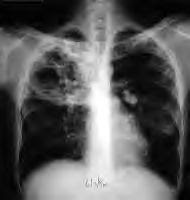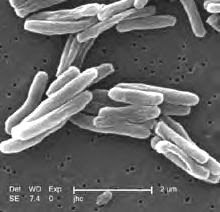TOMSK, RUSSIA—Prisoners in western Siberia who contract tuberculosis (TB) get sent to a forbidding complex in the heart of this provincial city. Armed guards with dogs patrol the nearby streets. Barbed wire covers the top of the outer walls. Iron bars clang shut when anyone enters. TB can keep you out of a remote Siberian prison camp, but it doesn't keep you out of jail.
And a decade ago, passing through this prison hospital's portals also posed a significant risk of premature death. Between 1991 and 2001 the incidence of TB in Russia's prisons reached a staggering 7,000 cases per 100,000 inmates, according to one estimate. Prisoners made up 25 percent of all new cases in the nation. In this oil-rich province the size of New Mexico with just over a million inhabitants, the prison TB rate reached the equivalent of 4,000 cases per 100,000 inmates, with nearly one of every 11 cases proving fatal.
The massive economic dislocation that accompanied the collapse of the Soviet Union turned Russia into an ideal breeding ground for a TB epidemic. Unemployment and alcoholism skyrocketed. Health and social services collapsed. As petty theft and violent crime soared, the prison population swelled to more than a million, with millions more moving in and out of incarceration. Many developed TB either because their immune systems, weakened by drugs, alcohol and poor nutrition, could no longer keep latent TB in check (an estimated one third of the world's population has latent TB) or they caught it from other prisoners.
The prisons in turn became an "epidemiological pump" for spreading the disease throughout the general population. Ex-prisoners, often with improperly treated TB that had mutated into the multidrug resistant form of the disease, moved back into cramped apartment blocs where, during the long, cold Siberian winters, hallways and unventilated apartments provided ideal conditions for airborne transmission to unwary neighbors, friends and family members। The annual rate of new TB cases among the general population in Russia more than doubled in the 1990s to 88 cases per 100,000 inhabitants. In Siberia the rate soared to over 130 new cases per 100,000 souls. For a comparison, the U.S. had around 10 cases per 100,000 residents per year during the same period, and currently has about four cases per 100,000 annually.
http://www.sciam.com/article.cfm?id=prison-plague-post-soviet-russia
WHAT'S NEW IN TUBERCULOSIS
Wednesday, 27 August 2008
Subscribe to:
Post Comments (Atom)





No comments:
Post a Comment